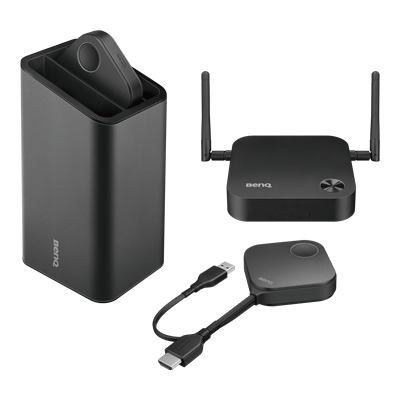Leverage BYOD with BenQ InstaShow
- BenQ
- 2019-02-26
The wireless presentation system InstaShow WDC10 promises full HD streaming in meetings and conferences for up to 16 participants. PROFESSIONAL SYSTEM Germany has tested the plug-and-play presentation system.
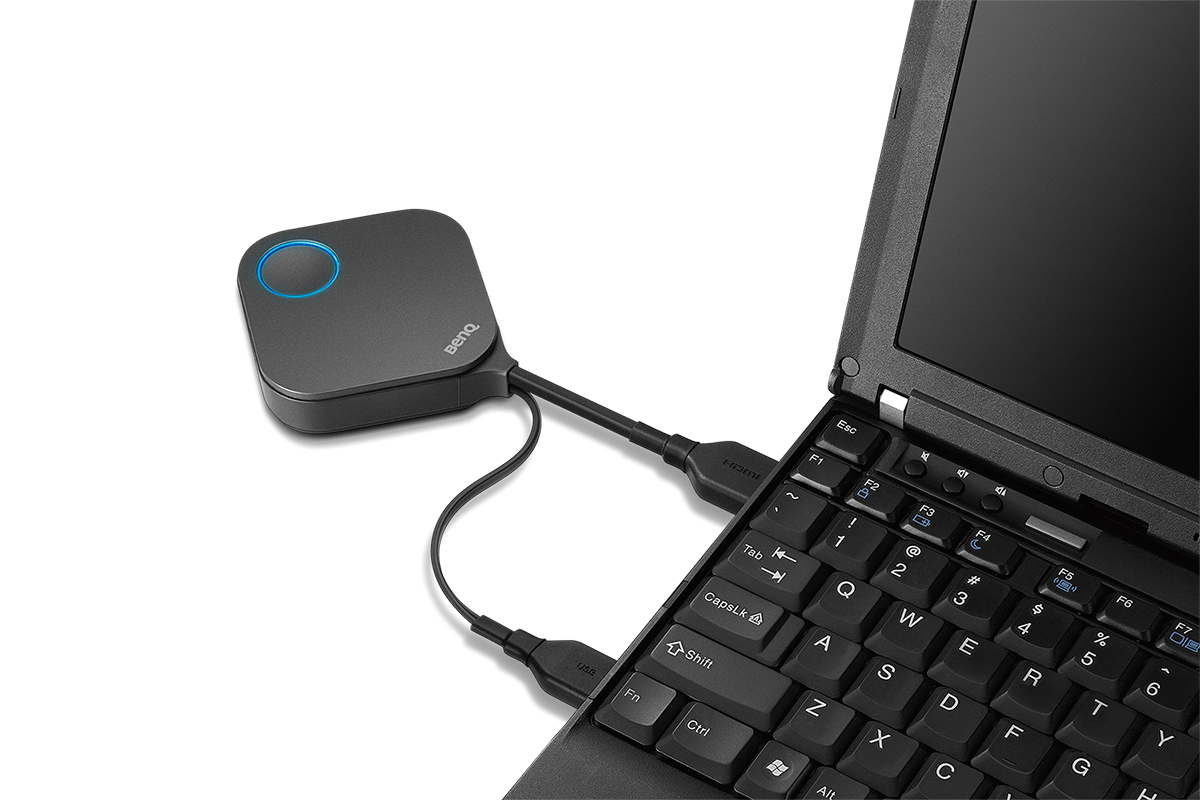
This article was first published on Professional System and BenQ was authorized to publish it on our blog.
Even if word has not yet spread to all AV and IT managers that the abbreviation BYOD stands for "Bring your own device": The need for presentation systems that connect various devices with a beamer or display in an uncomplicated way is constantly increasing in everyday business. And the number of new developments in the BYOD sector alone shows that in everyday presentation work, wireless is the preferred method. PROFESSIONAL SYSTEM has already presented a wide variety of systems.
With InstaShow, BenQ has delivered a product into the market that is strongly tailored for ease of use. Here, product designers have extensively researched the practical everyday life of the broad mass of conference rooms during the development process. What they found most of the participants in business meetings are neither IT experts nor do they have the time or leisure to get to grips with the operation of the presentation system.
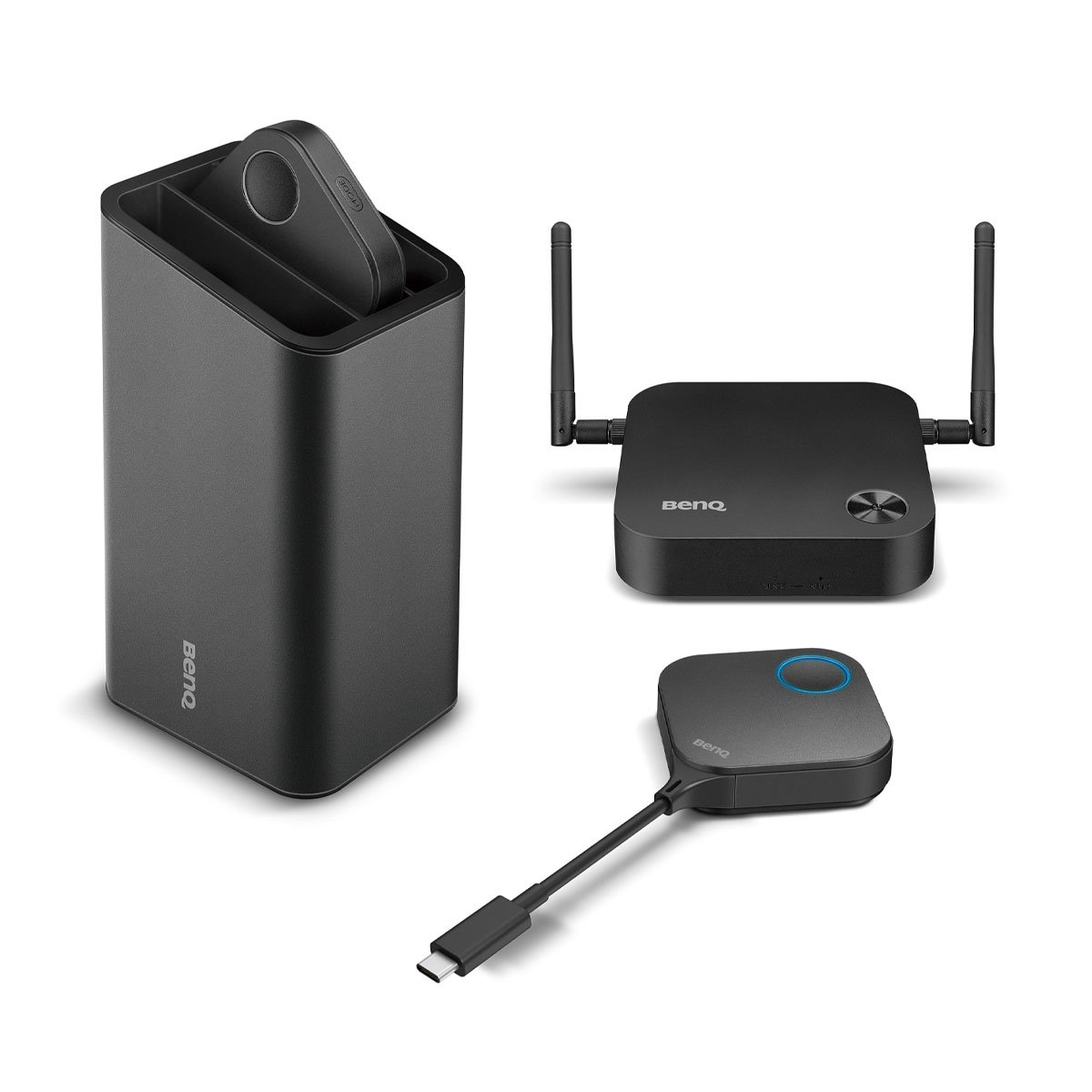
The InstaShow system WDC10 consists of a transmitter unit (button), which is connected to a computer via HDMI/USB, and a receiving unit, which is plugged into the HDMI input of the output device. Furthermore, there is a "cradle" for storing the buttons.
They simply want to send their screen to the projector as simply as possible – nothing more. And apart from the executive floors in large companies, it is usually not the staff that prepares every meeting seamlessly, so the chief executive only has to press the button.
In the case where conference speakers have to deal with the equipment themselves, it is important that the presentation system can be used intuitively and immediately. This is where InstaShow comes into its own. The system consists of a transmitting unit that is connected to a computer via HDMI/USB and a receiving unit that is plugged into the HDMI input of the output device. It has a ring-shaped LED illumination, which lights up red immediately after connection.
After a short time, the devices have found each other and the LED ring lights up in green. As long as no transmission is active, a welcome screen is displayed on the output device, on which a symbolic illustration shows a hand pressing the green button.

In addition to a micro-USB socket for power supply, the receiver unit also includes an HDMI interface, a LAN connection and a pairing button.
This simple graphic is sufficient as an explanation. At the same time, the IP address of the receiver and the name of the radio network used for the transmission are displayed on the screen. And if the system is configured accordingly, a three-lined greeting text can be individually created and displayed. As soon as the presenter presses the green-illuminated button of his transmitter, his screen is transmitted. The resolution of the beamer is automatically adjusted by comparing the resolution of the presenter’s computer. The maximum presentation resolution lies at Full HD.
During a presentation, the LED ring on the transmitter and receiver will turn to blue. If the button is pressed one more time, the presentation fades out and the LED ring turns back to green. From that point onwards, another participant can share her/his screen with a second InstaShow button.
Thanks to EDID management , InstaShow can also manage a second desktop. This allows the presenter to display a notebook view on their notebook while the meeting attendees view the presentation. What’s even more practical is that no software has to be installed or called up on the presentation computer to start the transmission. The InstaShow button directly picks up the HDMI signal and transmits it via WLAN 802.11 ac in the 5 GHz band to the receiver module.
This makes the radio unit independent of the operating system and very quickly ready for use. A total of up to 16 transmitters can be connected and presented alternately. Unfortunately, it is not possible to display a split screen so that several picture contents are displayed next to each other. Therefore you can switch between two different display modes at the InstaShow button. An unobtrusive switch at the edge of the device switches between the presentation mode and the video mode at the push of a button.
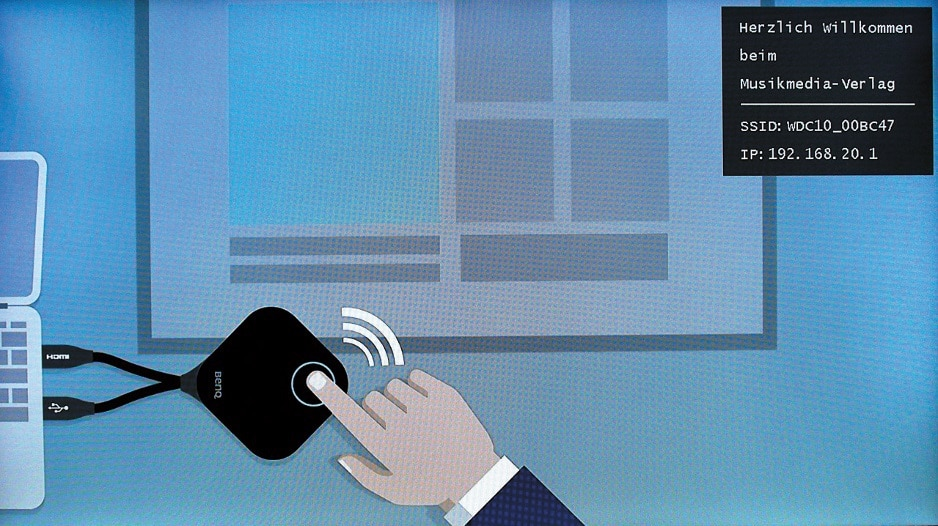
As long as no transmission is active, a welcome screen is displayed on the output device.
The presentation mode is optimized for the lowest possible latency and the best possible single image display. According to BenQ, a maximum of 100 milliseconds elapse between mouse movement on the computer and the display on the output device, so that you can move smoothly through documents. The video mode has a longer latency, but it is optimized to display moving images smoothly, as the name already suggests.
Full HD resolution and a frame rate of 30 frames per second. This usually runs fluently. In the endurance test with Full HD videos with a bit rate of 25 MBit/s in the full screen, however, there were also some jolts.
Better results are achieved when videos are shown with lower resolution and bitrate, or are not displayed in full screen. The latter is probably the more common case in everyday meetings for which InstaShow is explicitly designed. For wireless video transmission in high, uncompressed quality, the InstaShow manual refers to its sister product WDP02, which is used in home cinema.
In general, the closer the transmitter and receiver are to each other, the better the transmission. According to the manufacturer, the range is eight meters. However, in practice, distances of less than five meters have provided the smoothest display.
In addition to the image, the audio signals are also transmitted via HDMI. There is no separate audio output on the InstaShow receiver unit. Therefore, when setting up the system, you must make sure that the beamer or display has its own loudspeakers or audio outputs that can be connected to the loudspeakers.
The receiver unit shows a clear number of connections. In addition to a micro-USB socket for power supply, there is also an HDMI interface, a LAN connection and a so-called pairing button. This button only has to be pressed when the system is set up for the first time. If the InstaShow buttons to be connected are then pressed, the components find themselves automatically and can communicate from then on without further pairing.
With its pure focus on HDMI, BenQ is setting an example for modern hardware equipment. This is pragmatic – the number of missed customers who still operate projectors or displays without an HDMI interface is likely to be tolerably low. Instead, InstaShow users are delighted with a compact product that is also cheaper to produce.
The presentation computer should also be up-to-date as the computer needs a USB 3.0 port to provide the InstaShow button with sufficient power. With USB 2.0, the transfer could break off if the system is busy with large amounts of data.
In such cases, a web-based administration interface will offer individual configuration options for adapting the system. Here, you can, for example, reduce the image quality with a "low performance" setting. This should allow the transmission to work even with a lower power supply. If this is still not enough, you can also reduce the frame rate of the transmission.
With the web-based interface, administrators in a house with multiple InstaShow systems can set up and maintain all devices from a central location. Herein, clarity is the name of the game once more.
The number of setting options is limited. In addition to the described measures for adapting the transmission to low transmission and transmission power, there are several other functions that make life easier for administrators. If desired, you can assign your own fixed IP addresses for each device and automatically find WLAN channels or assign them manually.
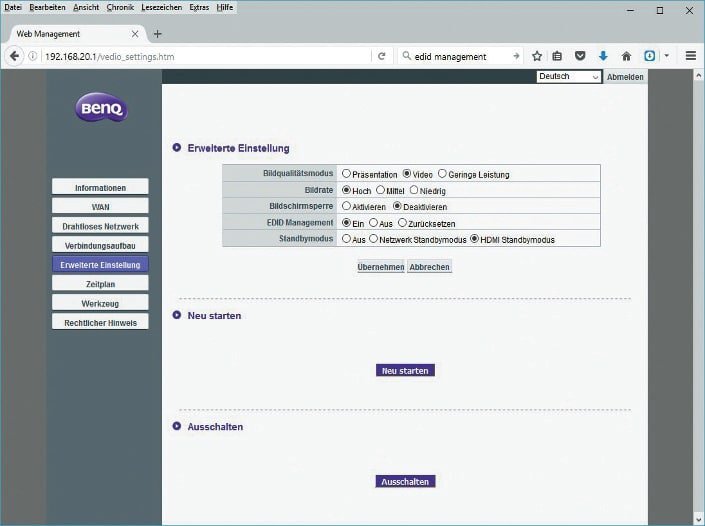
A web-based administration interface offers configuration options for adapting the system.
Furthermore, the transmission module can be automatically switched on and off on a daily or hourly basis and reset in case of problems. InstaShow is sold as a starter set that contains a receiver unit and two InstaShow buttons as well as all kinds of accessories.
This begins with a storage box for the two InstaShow buttons and continues with various mounting materials for the receiver unit – from Velcro tape for attachment to the desk leg to a mounting plate for wall- or ceiling mounting.
All required connection cables are also included in the scope of delivery. And even small things are taken into consideration: thus you will find a USB extension cable in the box, which is used when the USB port on the presentation computer is not directly next to the HDMI socket and the cable of the InstaShow button is not sufficient. The starter set is available in stores at a list price of 1,199 Euro.
Further InstaShow buttons are available in the two-piece set with a storage box for 629 euros.
If you primarily want to show business presentations with changing participants in your meeting room, InstaShow WDC10 is the right solution for you. The system is easy to use that it can be mastered immediately, by any type of users.
The prerequisite, however, is the latest hardware that provides HDMI and USB 3.0 and a distance up to max 8m between the presentation computer and the output device.
Color: Black
Operating systems compatibility: any operating system that supports the HDMI 1.4 standards.
Video outputs: HDMI 1.4, with HDCP
Image sequence: up to 30 FPS (depending on environment)
Signals: Video Timing: 1,280 × 720 (720P), 1,920 × 1,080 (1080P)
PC timing: 800 × 600, 1,024 × 768 (XGA), 1,280 × 768, 1,280 × 800 (WXGA), 1,280 × 1,024, 1,280 × 960, 1,360 × 768, 1,440 × 900, 1,400 × 1,050, 1,680 × 1,050
Resolution: 1,920 × 1,080 Full HD
Participants: up to 16 persons
Audio: Stereo, 16 Bit, 48 kHz
Wireless: IEEE 802.11AC, 5 GHz, 2T2R
Data transmission: up to 400 Mbps
Security protocol: WPA2 (WPA-PSK and WPA2-Enterprise)
Security: AES 128 Bit
Range: max. 8 m between InstaShow Button and InstaShow Host
Cable: USB Type A, HDMI Cable
Reset Button: 1×LED: Red (startup), Green (WLAN connection established), Blue (presentation)
Power supply: DC 5 V ±10 %, 0.9 A
Power consumption: normal: 4,5 Watt
Dimensions (W×H×D): 84.5 × 189.55 × 19.9 mm
Weight: 110 gram
InstaShow Host
Power Button: x1
Pairing key: x1
LAN: 1× (10/100 MBPS)
Video output: 1× HDMI 1.4 (video and audio)
LED: Red (startup), Green (WLAN connection established), Blue (presentation)
DC Power Jack: 1× (Micro USB)
Power supply: DC 5 V 10 %, 1.5 A
Power consumption: normal: 5 Watt
Network Standby: 2 watts
HDMI Standby: 0.02 Watt Dimensions (W×H×D): 110 × 110 × 27 mm
Weight: 150 gram
*This article was first published on Professional System and BenQ was authorized to publish it on our blog.
